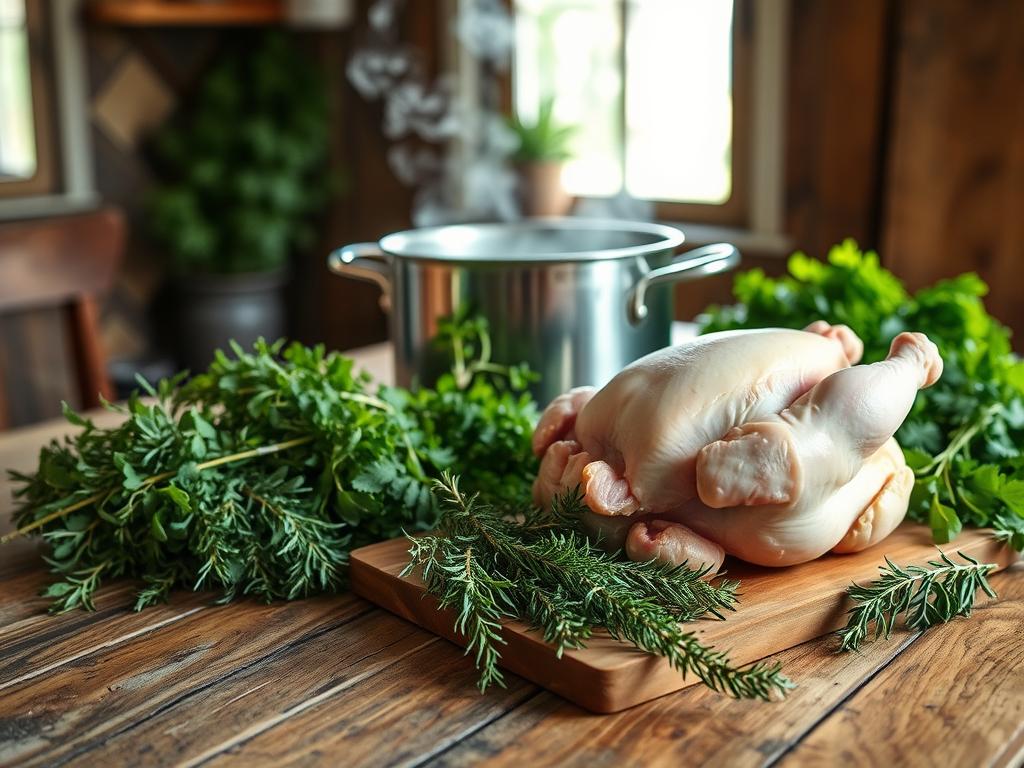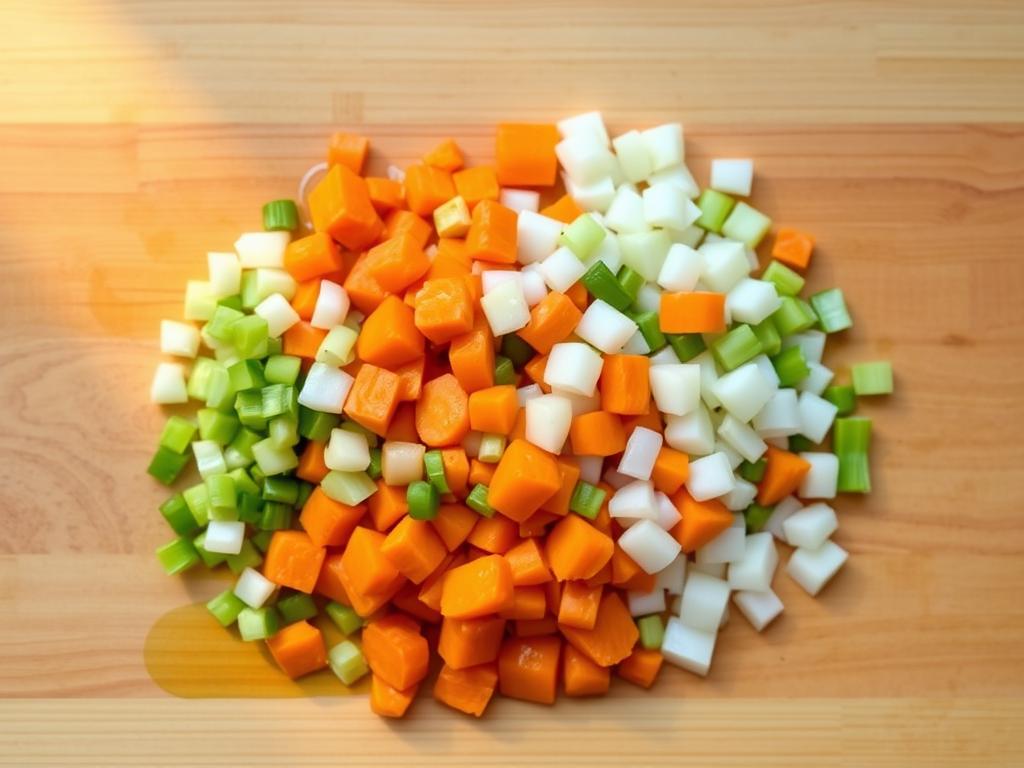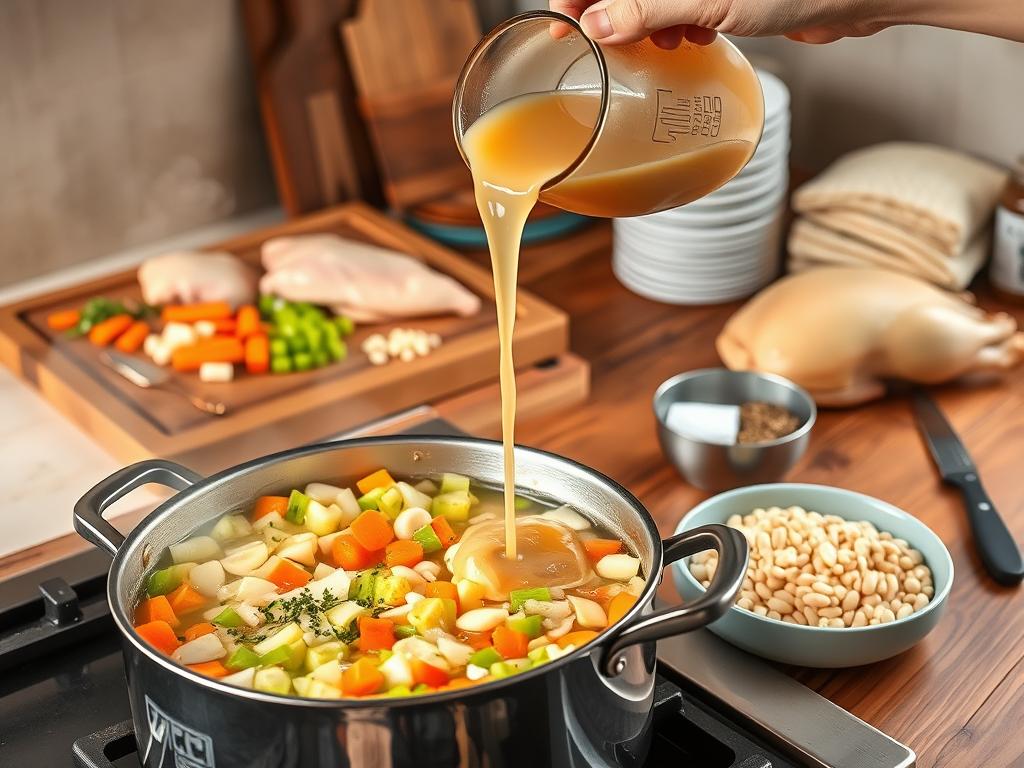There’s something magical about a meal that feels like a hug in a bowl. You know the kind – where every spoonful wraps you in warmth, and the aroma alone makes your kitchen smell like home. We’ve all had those days when only comfort food will do, and that’s exactly why we’re excited to share this beloved White Bean Chicken Soup with you.
Imagine tender shredded meat simmered with creamy cannellini beans, fresh herbs, and bright lemon zest. This dish balances restaurant-quality flavor with the ease of a weeknight dinner. It’s packed with 33 grams of protein per serving – perfect for fueling busy days or cozy family nights.
What makes this recipe special? It’s endlessly adaptable. Throw in extra veggies from your fridge, add a dash of cumin for smokiness, or top it with avocado for creaminess. Whether you’re meal-prepping lunches or hosting friends, this nutrient-rich creation delivers satisfaction without compromise.
Key Takeaways
- Packs 33g protein and 8g fiber per serving for lasting energy
- Works equally well for quick dinners or weekend gatherings
- Uses pantry staples with flexible ingredient swaps
- Zesty lemon and Parmesan add restaurant-worthy flair
- Freezes beautifully for make-ahead meal solutions
A Cozy Introduction to a Hearty Soup
Few dishes soothe the soul like a simmering pot of goodness waiting to greet you after a hectic day. Picture coming home to rich aromas of garlic and rosemary dancing through your kitchen – that’s the magic of homemade warmth in edible form.
Why This Recipe Brings Comfort
We’ve crafted this creation to be your culinary safety net. It transforms basic pantry staples into something extraordinary – tender protein paired with creamy legumes in a golden broth. What starts as simple ingredients becomes a meal that whispers, “Everything’s going to be okay.”
Three reasons it works every time:
- 30-minute magic: From fridge to table faster than pizza delivery
- Texture heaven: Silky broth with just enough substance to satisfy
- Second-day superstar: Flavors deepen beautifully overnight
Need dietary tweaks? Skip the dairy or swap veggies based on what’s in season. Freeze portions for those “can’t adult today” moments – it keeps its vibrant flavor for months. This isn’t just food; it’s edible reassurance that life’s chaos can wait while you recharge.
Essential Ingredients and Homemade Broth Preparation

Every spoonful’s richness comes from thoughtful ingredient choices. We focus on two game-changers: protein selection and broth craftsmanship. These elements transform simple components into liquid gold that nourishes body and soul.
Choosing the Right Chicken and Beans
Rotisserie meat saves time, but bone-in wings deliver deeper flavor. For broth lovers, fresh breasts simmered with wings create layered richness. Pair them with legumes that hold their shape – creamy cannellini or sturdy navy varieties work best.
Three bean truths we swear by:
- Texture matters: Mix types for pleasant mouthfeel contrasts
- Rinse well: Reduces sodium from canned varieties
- Soak dried beans: Overnight hydration prevents mealy texture
Crafting a Rich Chicken Broth
Heat olive oil until shimmering, then sear wings until golden. This flavor foundation builds complexity through caramelization. Add chopped onion, garlic, and celery – let them sweat until fragrant.
Pour water over the mix until everything’s submerged. Toss in peppercorns and simmer gently for 45 minutes. Strain through cheesecloth for crystal-clear liquid that’s ready to become soup magic.
Building a Flavorful Base: Mirepoix and Seasonings

Great meals begin with building blocks that whisper promises of deliciousness. Our secret weapon? The classic trio of diced celery, carrots, and onion – your ticket to complex flavor development without fancy techniques.
Sautéing Vegetables to Enhance Sweetness
We start with a sizzle of butter and olive oil in your favorite pot. The fat combo creates perfect browning conditions. Add chopped vegetables and stir until they glisten – this wakes up their natural sugars.
Patience pays off here. Cook them low and slow until edges turn golden. That caramelization isn’t just pretty; it’s flavor gold dissolving into your broth. Sprinkle flour over the mix to thicken the soup naturally as it simmers.
Infusing Herbs and Spices for a Deep Flavor
Now comes the aromatic magic. Toss in oregano and thyme with the warmth still rising. Dried herbs release oils gradually, while fresh ones (like parsley) get added last for brightness.
Timing matters. Add garlic just before liquid hits the pot – it’ll mellow without burning. Bay leaves and rosemary stems steep like tea, infusing every spoonful with earthy notes. Finish with lemon zest or dill for that restaurant-quality pop.
The Step-by-Step Process to Create the Soup

Mastering this recipe comes down to trusting the process – we’ll walk through each stage together. You’ll learn how layers of flavor develop through careful timing and technique, transforming simple ingredients into something extraordinary.
From Broth to Vegetable Sweating
Start by heating olive oil and butter in your Dutch oven over medium heat. Add diced onion, celery, and garlic – stir until they glisten. This gentle sauté wakes up their natural sweetness without burning.
Sprinkle flour over the softened vegetables, stirring constantly. Let the mixture cook for 10 minutes until the raw flour taste disappears. This step thickens the broth naturally while deepening its golden color.
Simmering and Blending Flavors
Pour in chicken broth and dried oregano, scraping up any browned bits from the pot’s bottom. Bring to a lively simmer, then reduce heat. Let it bubble gently for 15-20 minutes until carrots turn fork-tender.
Add shredded protein and legumes last to prevent overcooking. Stir just until heated through – about 3 minutes. Finish with lemon juice and fresh parsley for brightness that makes every spoonful sing.
Watch for these cues:
- Perfect sweat: Vegetables soften but don’t brown
- Simmer ready: Bubbles break the surface gently
- Doneness test: Carrots pierce easily with a fork
Preparing the Perfect white bean chicken soup
The secret to soul-warming meals lies in mastering the dance between clock and thermometer. Let’s break down how timing and technique transform good dishes into unforgettable creations – while steering clear of common stumbles.
Timing and Temperature Guidelines
Three timing tricks we swear by:
- 3-5 minute magic: Cook diced veggies just until they glisten – overcooking kills their bright crunch
- Medium-low love: Maintain gentle bubbles, not rapid boils, to tenderize without toughening
- 20-minute finish: Add pre-cooked protein last to prevent rubbery texture
Avoiding Common Pitfalls
Watch for these easy fixes:
- Salt smart: Season in stages – broth reduces and concentrates flavor
- Heat control: Burnt garlic? Lower the flame and stir constantly
- Bean prep: Rinse canned legumes thoroughly to avoid metallic aftertaste
Trust your instincts – if something smells heavenly, it probably is. Adjust pepper levels at the end for perfect zing. Now grab your favorite pot and let’s make memories one ladle at a time.
🌟 Indulge in the Cheesiest Delight! 🌟 Are you ready to elevate your snack game? Our latest blog post, “Cheesy Breadsticks: The Ultimate Savory Snack,” is packed with mouthwatering recipes and tips that will make your taste buds dance! Perfect for parties, movie nights, or just a cozy evening at home—these cheesy breadsticks are a must-try!
Don’t miss out on this delicious opportunity to impress your friends and family. Dive into the cheesy goodness now! Click the link below to savor every detail and whip up your new favorite snack today! 🍞🧀

